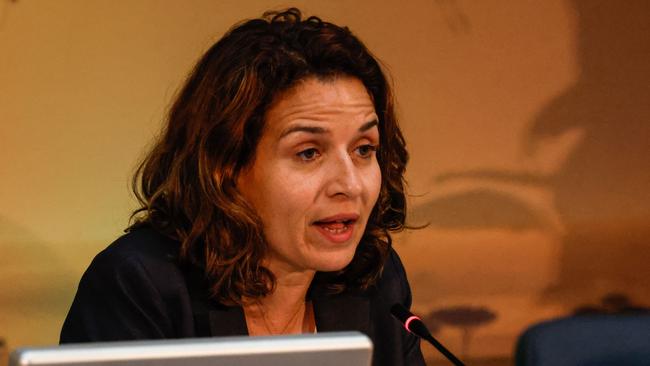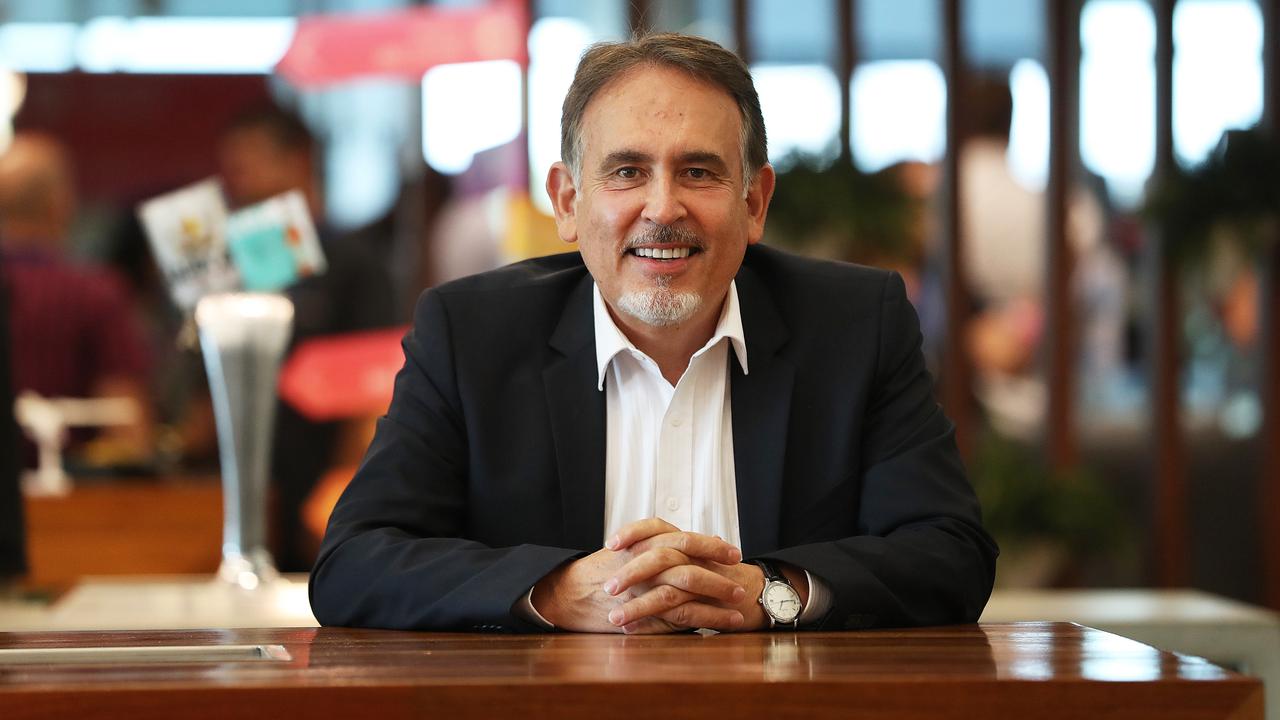Risks in Andrew Forrest’s ‘tryst’ with Moroccan minister
Andrew Forrest’s Moroccan romantic connection risks complicating a major business deal for Fortescue’s African energy ambitions.

Business
Don't miss out on the headlines from Business. Followed categories will be added to My News.
Andrew Forrest’s big plans in Morocco could be complicated by being linked romantically with the country’s Energy Minister, who also sits on the board of Fortescue’s joint venture company in the North African country.
Moroccan Energy Minister Leila Benali on Tuesday refused to comment on photographs of her allegedly sharing an intimate moment with the Fortescue chairman.
In her first comment on the matter since The Australian revealed her identity, Ms Benali refused to shed any light on a photograph of her allegedly sharing an intimate moment with Andrew Forrest in France last week.
In footage posted to a local news website, Ms Benali was asked by a Moroccan journalist whether she had a romantic connection with Mr Forrest and if there were any business relationships between them.
The minister did not confirm the authenticity of the photograph but did not deny it.
“No, no I will not speak,” she said in Moroccan before being escorted out.
But the public relationship threatens to complicate matters for Fortescue as it draws up plans for a multi-billion renewable energy and green ammonia investment in Morocco with joint venture partners OCP Group.

In addition to being the country’s energy minister, Ms Benali sits on the board of directors of state-owned OCP, along with other senior Moroccan government ministers.
OCP is one of the biggest phosphate miners in the world, controlling Morocco’s vast deposits of the fertiliser – estimated to make up more than 70 per cent of the world’s known reserves.
Together the two companies plan to build a major green ammonia hub in the country, adding to OCP’s fertiliser exports to the rest of Africa and the world and creating a major manufacturing centre.
The joint venture agreement was announced in early April, and includes both renewable energy generation and “large-scale integrated green ammonia and green fertiliser production capacity”, manufacturing facilities to build electrolysers needed to create hydrogen – a key input for green ammonia.
The two companies also plan a major research, development and education facility near Marrakech.
But OCP’s plans are already controversial in Morocco. OCP says it has already invested about €2.5bn as part of a €12bn green program aimed at increasing the group’s fertiliser production to 20 million tonnes a year – up from 12 million tonnes in 2022.
Its plans include 5 gigawatts (GW) of clean energy capacity by 2027, with a target of 13GW by 2032, the company says.
But OCP’s initial plans for a green ammonia production centre were centred around the small fishing town of Tarfaya in south western Morocco – once best known for the treacherous waters off its coast, a 19th century British fortress now crumbling into the sea, and for being the closest mainland town to the surfing resorts of the Canary Islands, about 80km to the west.
OCP planned to build a 3.8 gigawatt wind and solar farm in the region, with an eventual production capacity of 1 million tonnes of green ammonia a year from 2027 and 3 million tonnes from 2032.
Tarfaya is only 35km north of the disputed regional border with Western Sahara – a Spanish colony until 1975, but since occupied by Morocco.
Moroccan control of the region is disputed by the traditional Sahrawi people of the region, and their separatist movement has this year launched attacks on Moroccan troops in the region – which already hosts large wind farms built by companies owned by the country’s royal family.
It is unclear whether Fortescue’s joint venture with OCP will focus on the Moroccan company’s original plans, and the Australian mining and energy giant has not elaborated further on their work in the region.
“The Fortescue team is working with key stakeholders as we continue to develop our ambitious strategy with OCP, developed over more than two years, to develop green energy, hydrogen and ammonia in Morocco,” a spokesman said on Tuesday.
Fortescue’s African plans have already suffered one major setback this month, after being replaced as the preferred developer of the giant Grand Inga hydro-electric project in the Democratic Republic of Congo with Nigerian oil company Natural Oilfield Services.
The Grand Inga, estimated to come with a total cost of more than $US80bn, was a favoured project of Dr Forrest, and Fortescue’s involvement was announced with great fanfare in mid-2021, during the first flush of announcements around the company’s plans to become a green energy giant by the end of the decade.
More Coverage
Originally published as Risks in Andrew Forrest’s ‘tryst’ with Moroccan minister




